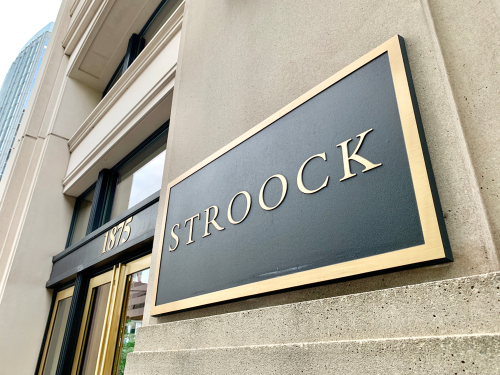Emoji Laws in Health Care ❤️⚖️
By Bobby Stroup
2023 is the year of the emoji lawsuit. This year a “thumbs-up” 👍 emoji was found to be part of a legally binding contract. In another legal case, a “moon” 🌝 emoji was found to be possible evidence of securities fraud. This legal evolution may seem a bit strange. We are more accustomed to emojis being the characters in a “cinematic masterpiece” or the subject of corporate public relations. However, times are changing, and these symbols now have financial and legal implications in a wide variety of industries. Health care is no exception.
Public Health Awareness 📢
First, hospitals might try to reach patients through engaging ads that deploy emojis.
When people see social media posts or advertisements with emojis, they are more likely to engage with the content. Engaging content can improve top of mind awareness and increase the likelihood a patient will consider the hospital when they need care. This should not be taken for granted. Nearly 36% of U.S. adults have low health literacy. This means many people may not even know they have health issues professionals could resolve. Additionally, emojis might also make health care seem more fun, which some investors and physicians believe could improve health outcomes.
Importantly, within any advertisements, medical institutions should follow the Stark Law. The Stark Law requires hospital advertisements disclose when physicians may have financial conflicts of interest. For this disclosure, emojis would not be appropriate. A “bag of money” 💰emoji accompanied by a “doctor” 👩⚕️ emoji is unlikely to satisfy the legal standard for disclosure.
Hospitals should also consider the AMA code of ethics when making ads. This code of ethics prohibits ads from using misleading statements or omitting necessary material information. That requirement means a clinic probably shouldn’t advertise with a “pill” 💊 emoji if they don’t have a pharmacy or a “prosthetic” 🦾🦿emoji if they don’t have prosthetic specialists.
Clinical Care 👩⚕️
Once the patients are at the hospital, some physicians are using emojis to bolster patient care. These physicians would argue emojis can improve clinical treatment by enhancing communications. Advocates of the practice believe that condensing medical concepts into emojis can simplify important and complicated conversations.
In health care, complexity is everywhere. Health insurance is confusing. Notes about our health can be difficult to understand. Paying for medical treatment brings unexpected costs. Emojis might provide useful summaries of these convoluted matters.
The use of emojis in healthcare documents would align with the idea of legal design. Legal design applies design thinking to legal documents to increase interpretability and promote accessibility for those who are not legal professionals. As a part of legal design, emojis could prove particularly helpful for individuals who struggle with language and literacy barriers. Even those without the same level of need might find emojis more understandable than legal jargon.
AI Adoption 🤖
Of course, improving patient communications only makes a difference if there are communications to be improved. Increasingly, patients complain about insufficient facetime with their doctor, feeling they don’t have enough time to communicate their needs. Health care workers are also concerned about how transactional the work has become and how doctor-patient relationships are suffering. We might want to change these interactions, but we don’t have enough doctors to satisfy the demand.
Doctors are a finite resource, and they cannot give their full time and attention to everyone. AI might be able to help. Medical Brain is one AI tool currently being used to reduce the workload of care providers by automating patient triage. The AI chatbot asks patients about their symptoms to divert care away from unnecessarily high-cost settings.
Medical Brain could use emojis to enhance their communications in the same way real doctors do. Since the AI conversations already happen within a chat function, implementing emojis seems like a straightforward addition. Further, people are more likely to interact with robots when they find them friendly and competent. Since emojis evoke friendliness, utilizing them might help accelerate adoption of the company’s product.
Emoji Risk ⚠️
Not everything is sunshine ☀️ and rainbows 🌈 with emojis. Some patients might view those who use emojis as incompetent. Others might mistake the emojis intended meaning. Dr. Andrew Huberman has said “emoji-ization” (the summary of emotions within a single image) could be causing us to miss the important nuances of human experiences. Finally, emojis raise legal issues as a new form of data subject to HIPAA compliance, as well as accessibility concerns for the visually impaired. All these concerns are valid.
We could spend a lot of time stressing about this newfound exposure to emoji litigation. Instead, I believe the greater lesson to be learned is that old technologies can bring new opportunities. Thus, instead of worrying, I hope we can appreciate the emoji evolutionary process. These symbols grew from casual social use with AIM in the 2000s to professional medical use with AI in the 2020s. I can’t wait to see what old technology innovators revamp next.





